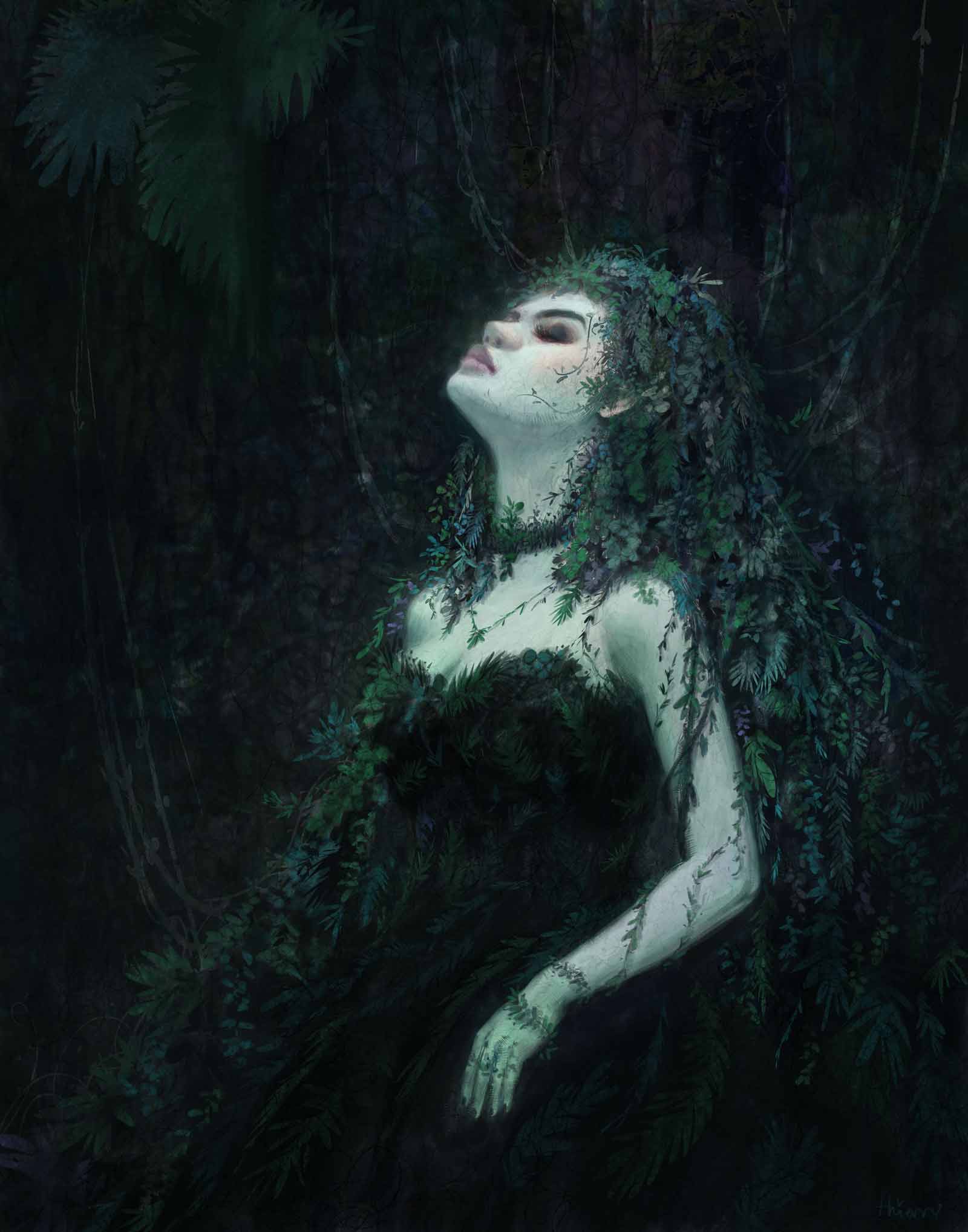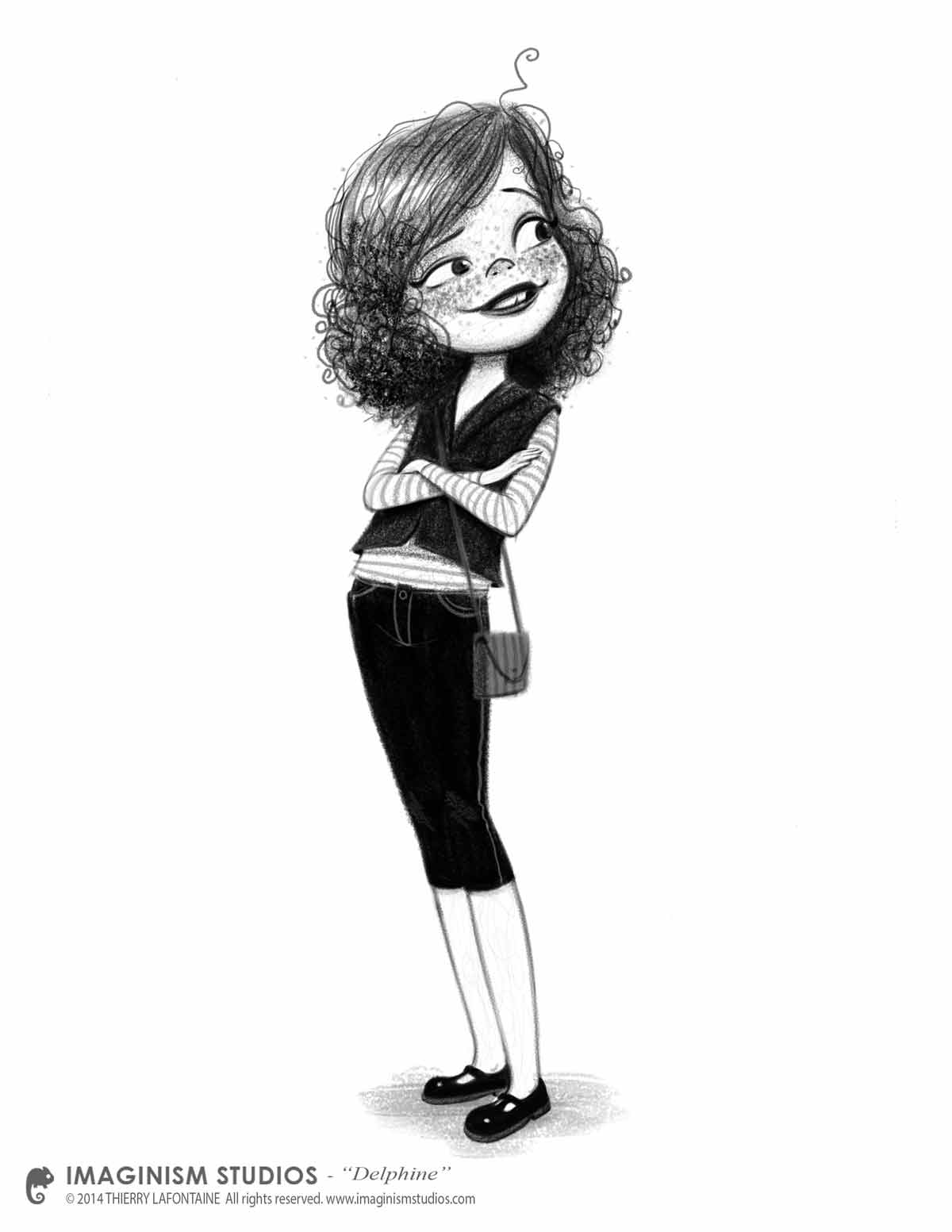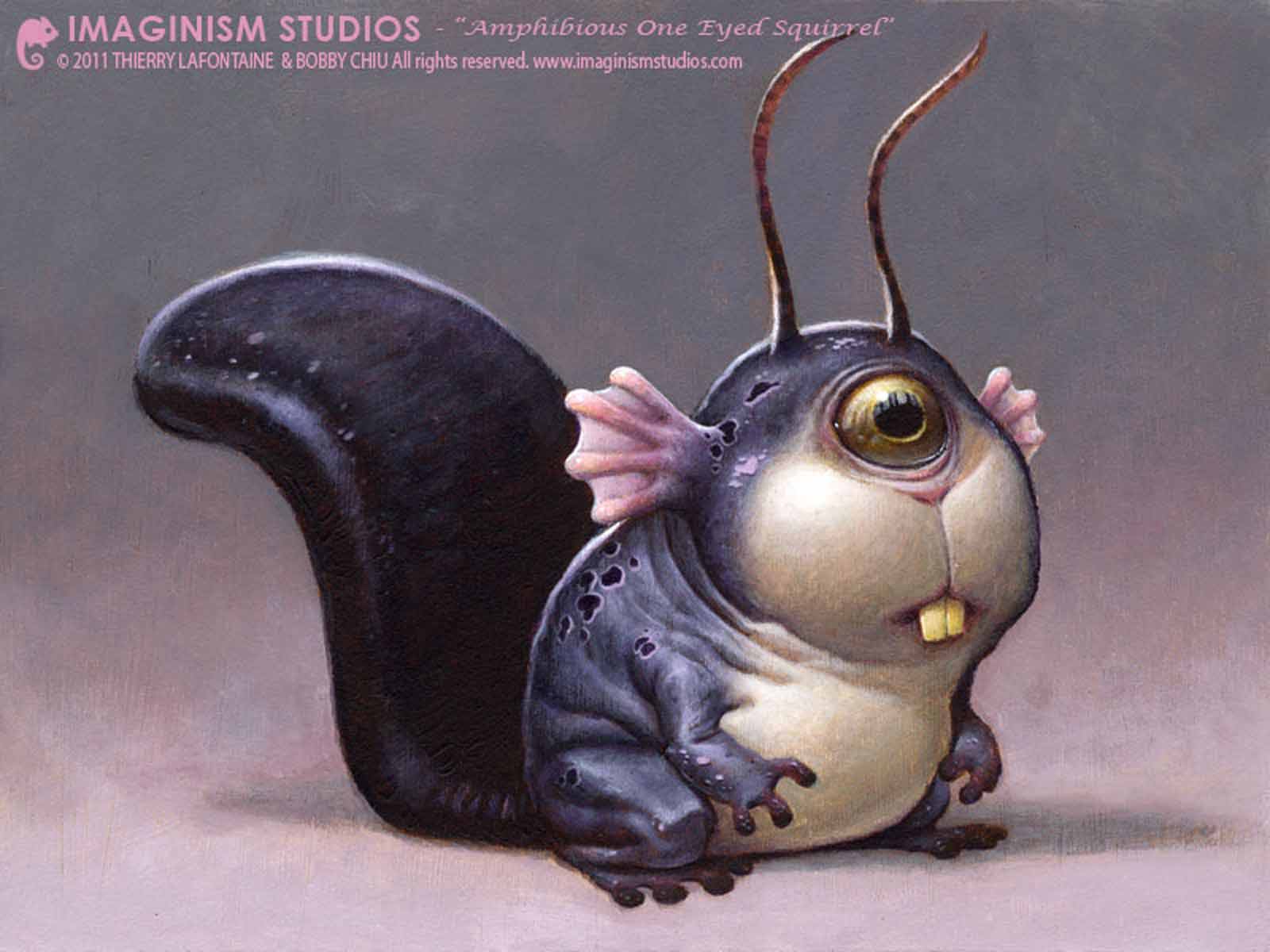In our regular Spotlight segment we explore artists' experiences and
inspirations to understand what defines and inspires their unique styles.
Everyone’s art work is deeply idiosyncratic and Thierry Lafontaine is no different when it comes to this. Thierry surprised us not only by how in depth his answers were to our questions, but also the wide variety of styles and techniques in his commissions. To view more of Thierry's work click on the links at the bottom of this article.
Can you give us a brief background on yourself?
I was born in Brazil and when I was 2 weeks old. I grew up in Quebec. I always loved learning and I have always been fascinated by life and discovering new things. I have studied a lot of different subjects in my life. I went to college to study science, then I studied film. After that I went on to study wine, comic books, art, and animation. One day someone asked me what would I do if I would win the lottery and have so much money that I wouldn't need to work and could do absolutely anything that I wanted all day. The answer that I came up with was, I would just learn all my life. When I realized that was the reason why I kept studying different things and why I kept getting bored of every job I had after a few months. I felt like I had learned a pretty useful thing about myself. I almost became a lot of things. I thought about joining the army, becoming a computer programmer, a 3d modeler, and a business man. I worked in the wine industry as a wine adviser for years, but I always felt my heart whispering in my ear to do something else.
One thing that I have always done is follow my heart. When you follow your heart you take an unknown path and your brain and your logic tell you that this is the wrong path and that you shouldn't be doing that. It also looks like you are doing the wrong thing when you follow your heart, but it feels right. There is this faint silent voice inside of my head that guides me and tells me that I am doing the right thing, but at the same time there are these loud voices in my brain telling me that you I'm not doing the right thing and showing me proofs to validate these thoughts. Following your heart doesn't make any logical sense, but it feels right. When I found art, I was 24 years old. I realized that it was the perfect job for me because artists are eternal students and that if one day I wanted to learn about any subject I could study it, draw it, and paint about it. If the next day I was interested in something completely different, then I could learn about that start painting and drawing about that new subject. When I was 28 I was sleeping on my tutor's floor and spending my days learning and doing art. While all of my friends were buying houses, getting married, and having kids. It sure looked like I wasn't doing the right thing, but it felt right because I was following my heart.
After years of hard work, persistence, determination, and blindly following my heart I started teaching. At the time I wasn't as in touch with my intuition as I am right now. So what I did was, I broke up everything that I was learning into rational explanations in order to explain to others what I was doing when I was drawing. I started developing a passion for Life Drawing, the art of drawing human models, and was attending Life Drawing sessions for over 20 hours a week. When my classmates started asking me how I drew certain things it was easy for me to explain my thought process to them. My classmates started telling me that I was very good at explaining things in a very clear way that was easy for them to understand, and that is how I discovered my affinity for teaching. I wouldn't consider myself a teacher, but more of a learner. I just love learning so much. I became very efficient at learning over time. It is my passion and I am constantly trying to find new ways to learn and become better at it. My true passion is learning and art is a never ending learning journey so I knew I had found my calling. Picasso said, "The meaning of life is to find your gift. The purpose of life is to give it away". I can say from experience that this is true. I also believe that the more you learn about art the more you learn about yourself, and the more you learn about yourself the more you learn about others. My gift is my insatiable passion for learning, and giving it away helps others follow their heart by becoming a better artist. I have crossed paths with hundreds of artists along the way and anyone that is committed to becoming a better artists and really wants to learn can contact me, I love company. I frequently mentor apprentices that move in with me for a month or so and we learn together. During this time our paths to become better artists join and become one.
Along with my passion for learning new things, I enjoy nature, spirituality, communication, storytelling, and plants. I work as a Concept Artists and Character Designer on films, and love doing illustrations for children's books. I am working on publishing some books of my own soon.
What kind of influence does your location have on your career?
Nature is the best teacher. I live in the Canadian forest where I am surrounded by trees and wildlife. This type of environment is very important to me. I feel this deep connection to nature, and I have found this environment to be very inspiring. When I have artists blocks, I just go outside and take a walk. I do landscape paintings, and I am always seeing interesting things that I want to paint. I love the quietness and smells of nature. I like to feel like I am not in my environment, but part of it. I think that it is important to love where you live. In this day in age artists can live anywhere and do work for anyone on the planet, because of the internet.
What is your greatest source of inspiration?
My greatest source of inspiration is nature. It is fascinating to me and a bottomless well of knowledge and novelty. It never ceases to amaze me, and whenever I take the time to observe it I feel that it teaches me new things. I believe in something called the Gaia Hypothesis also known as the Gaia theory or the Gaia principle. It proposes that living organisms interact with their inorganic surroundings on Earth to form a synergistic and self-regulating, complex system that helps to maintain and perpetuate the conditions for life on the planet. The originality of the Gaia hypothesis relies on the assessment that there is a planetary homeostasis balance that is actively pursued with the goal of keeping the conditions for life optimal. I believe that our planet and nature is a conscious living organism that I am a part of, so when I run out of inspiration I just meditate on this connection and I instantly feel inspired. I also know that when you believe something, it doesn't matter whether it is true or not. The effect it has on you is real no matter if that belief is true or not.
Could you pick one piece of art that has made a lasting influence on you, and if so why?
One piece that has been significant in my artistic development is called Lady of the Forest. This piece is significant for me because painting it was a special experience. By the end of the painting, I was a different artist than I was before I started the painting. I started this piece with the intent of learning how to paint foliage. I wanted to learn how to paint foliage, so I observed nature and entered into this internal dialogue in my head and spent the next few hours in a meditation like state trying different ways to paint foliage and failing over and over again. No matter how many times I failed I just kept going until I reached something called a flow state. In positive psychology, flow, also known colloquially as being in the zone, is the mental state of operation in which a person performing an activity is fully immersed in a feeling of energized focus, full involvement, and enjoyment in the process of the activity. In essence, flow is characterized by complete absorption in what one does, which results in a loss in one's sense of space and time. By the end of the painting I had came up with two new different painting techniques and a new way to use my digital pen. Every time I look at this piece, I remember how amazing the experience of painting it was.
What skills or techniques do you find most useful in your line of work? Do you use primarily traditional or digital methods to create your artwork?
I share something called The Gift with my students. The Gift is the ability to see beyond the surface of things, to see the invisible relationships that fill the seemingly empty space between things. I think the mission of the artists is to use this Gift to manifest physically the wonders of the invisible world of his imagination. I think the most useful skill for an artist is their ability to see beyond the surface of things and see wonders when most people see nothing.
How can people who are interested in discovering more of your work find it?
website:
www.imaginismstudios.com/thierry-lafontaine
facebook:
www.facebook.com/thierry.lafontaine
instagram:
www.instagram.com/thierrylafontaine
twitter:
@thierryart














